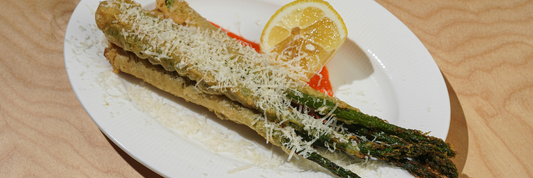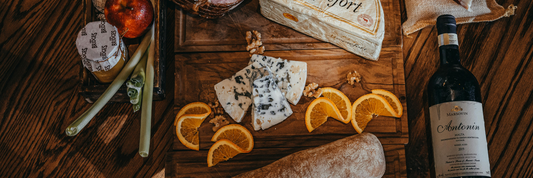Sushi is more than food it is an art form rooted in precision, elegance, and respect for nature. Yet, as sushi restaurants expand globally, they face a critical challenge: how to protect the integrity of delicate rolls and sashimi while minimizing environmental impact.
Consumers today demand more than just freshness; they want eco-friendly packaging that aligns with their values. This is where bamboo and sugarcane packaging have emerged as two leading alternatives to plastic. But which one is the right fit for your sushi restaurant?
At Kimecopak, we work closely with sushi brands to help them transition smoothly into sustainable packaging solutions that not only protect the food but also elevate the dining experience.
-
The Rise of Ghost Kitchens for Ramen: Packaging Challenges and Solutions
- Smart Labels and QR Codes: Adding Transparency to Sushi Packaging
-
Cost-effective Sushi Packaging for Small Restaurants
Why Sushi Restaurants Are Switching to Eco-Friendly Packaging

Sushi brands are under increasing pressure to move beyond traditional plastic trays and containers. The reasons are clear:
- Consumer demand: According to McKinsey & Company, 67% of consumers consider sustainable packaging an important factor in their purchasing decisions.
- Regulations: Many cities and countries are banning or taxing single-use plastics, pushing food businesses toward renewable materials.
- Brand positioning: For premium sushi restaurants, packaging is not just functional it communicates quality, authenticity, and environmental responsibility.
Eco-friendly packaging is no longer a “nice-to-have” but a strategic necessity.
Understanding Bamboo Packaging

What is Bamboo Packaging? Bamboo is one of the fastest-growing renewable resources in the world. Packaging made from bamboo pulp is strong, natural-looking, and compostable.
Benefits of Bamboo Packaging for Sushi:
- Premium aesthetic that complements the artistry of sushi.
- Strong and durable, suitable for dine-in and delivery.
- 100% biodegradable and compostable.
- Naturally grease- and water-resistant when treated properly.
Limitations of Bamboo Packaging:
- Higher cost compared to sugarcane.
- Slightly heavier, which can affect shipping costs.
- Limited availability in some markets.
Understanding Sugarcane Packaging (Bagasse)

What is Sugarcane Packaging? Sugarcane packaging, also called bagasse, is made from the fibrous residue left after sugarcane is pressed for juice. Instead of being discarded, the material is transformed into sustainable packaging.
Benefits of Sugarcane Packaging for Sushi:
- Affordable and widely available.
- Lightweight yet strong enough for sushi rolls and sides.
- Compostable and biodegradable within 90 days in commercial facilities.
- Heat- and cold-resistant, making it versatile for sushi with sides like miso soup.
Limitations of Sugarcane Packaging:
- Less premium-looking compared to bamboo.
- May require extra lining for wet or oily foods.
- Durability is slightly lower than bamboo in long delivery times.
Bamboo vs. Sugarcane Packaging: A Detailed Comparison
| Feature | Bamboo Packaging | Sugarcane Packaging (Bagasse) |
|---|---|---|
| Sustainability | Highly renewable, compostable | Made from waste material, compostable |
| Durability | Strong, premium feel | Lightweight, less sturdy for long transport |
| Cost | Higher | More affordable |
| Appearance | Elegant, natural wood-like | Simple, clean, white/off-white |
| Customer Perception | Premium, eco-conscious | Practical, eco-friendly, affordable |
Which option is better?
- High-end sushi restaurants: Bamboo enhances the premium dining experience.
- Casual or delivery-focused sushi shops: Sugarcane packaging balances cost-effectiveness with sustainability.

Real-World Applications in Sushi Restaurants

Different types of sushi benefit from different packaging:
- Nigiri and sashimi: Bamboo trays highlight the artistry and provide a strong base.
- Sushi rolls for takeout/delivery: Sugarcane containers offer lightweight practicality.
- Party platters or catering: Bamboo elevates presentation while ensuring sturdiness.
Many sushi restaurants combine both options depending on the menu item and customer expectations.
Conclusion
Both bamboo and sugarcane packaging offer excellent alternatives to plastic for sushi restaurants. The choice depends on your restaurant’s positioning, budget, and customer expectations.
- Bamboo: Ideal for premium, high-end sushi experiences.
- Sugarcane: Perfect for casual, delivery, or large-volume operations.
No matter which path you choose, the most important step is to start now. Customers are paying attention, and sustainability is quickly becoming a standard expectation.
At Kimecopak, we are committed to helping sushi restaurants find the perfect balance between sustainability, design, and performance.
FAQs
1. Is bamboo packaging better than sugarcane for sushi?
It depends. Bamboo offers a more premium look and sturdiness, while sugarcane is more affordable and practical for delivery.
2. Are bamboo and sugarcane packaging both compostable?
Yes, both are 100% compostable under the right conditions. Bamboo is naturally biodegradable, while sugarcane (bagasse) breaks down quickly in commercial composting.
3. Which option is more cost-effective for small sushi shops?
Sugarcane packaging is generally more budget-friendly, making it suitable for smaller or delivery-focused restaurants.
4. Can bamboo and sugarcane packaging handle sauces and moisture?
Yes, though bamboo is naturally more durable. Sugarcane may require additional lining for oily or very wet foods.
5. How does Kimecopak help sushi restaurants with eco-friendly packaging?
Kimecopak provides tailored packaging solutions, from paper container to sugarcane containers, ensuring sushi brands maintain both sustainability and premium presentation.
-
LEARN MORE about How "Subscribe for a Happy Life" will benefits your business HERE!
-
LEARN MORE about Kim Vu, sharing on the challenges she faced as a former restaurant owner, and how she overcame them to create KimEcopak HERE!




